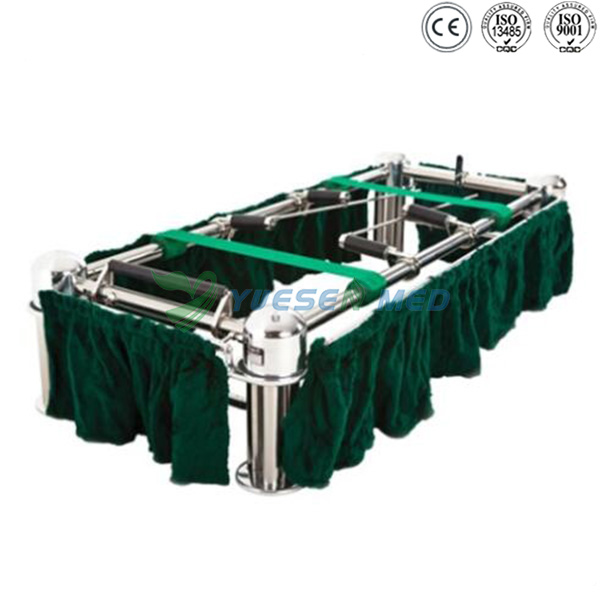Title: Exploring the Advantages of Flat Panel Detectors in Medical Imaging
Introduction:
In the ever-evolving landscape of medical imaging technology,
flat panel detectors (FPDs) have emerged as powerful tools revolutionizing diagnostic capabilities and patient care. These cutting-edge devices offer significant advantages over traditional imaging systems, providing clinicians with enhanced image quality, faster acquisition times, and advanced functionality. In this comprehensive guide, we'll delve into the benefits of flat panel detectors in medical imaging, exploring their applications, features, and the latest innovations in the field. Join us as we unlock the potential of flat panel detectors to transform healthcare delivery and improve patient outcomes.
Understanding Flat Panel Detectors:
Flat panel detectors (FPDs) are advanced digital imaging devices used in radiography, fluoroscopy, and computed tomography (CT) to capture high-resolution X-ray images of the human body. Unlike traditional X-ray film or computed radiography (CR) systems, which rely on analog film or photostimulable phosphor plates, FPDs utilize electronic sensors composed of amorphous silicon or complementary metal-oxide-semiconductor (CMOS) technology to convert X-ray photons into digital signals in real time.
Benefits of Flat Panel Detectors:
Superior Image Quality:
One of the primary benefits of flat panel detectors is their ability to produce high-resolution images with exceptional clarity, contrast, and detail. FPDs offer superior image quality compared to traditional film-based systems, allowing clinicians to visualize fine anatomical structures, detect subtle abnormalities, and make more accurate diagnoses.
Enhanced Diagnostic Accuracy:
By providing detailed anatomical information and superior soft tissue contrast, flat panel detectors facilitate more accurate interpretation of diagnostic images by radiologists and clinicians. The improved image quality enables early detection of pathology, precise localization of abnormalities, and comprehensive assessment of disease severity, leading to more informed treatment decisions and better patient outcomes.
Reduced Radiation Dose:
Flat panel detectors offer dose reduction benefits by optimizing X-ray exposure parameters and minimizing unnecessary radiation exposure to patients and healthcare providers. Advanced features such as automatic exposure control (AEC), dose modulation algorithms, and real-time feedback mechanisms enable dose optimization while maintaining image quality, ensuring patient safety and compliance with radiation dose guidelines.
Faster Image Acquisition:
Compared to traditional film-based systems, flat panel detectors offer rapid image acquisition and processing capabilities, reducing the time required to obtain diagnostic images and enhancing workflow efficiency in clinical practice. Real-time dynamic imaging with FPDs allows for immediate visualization of anatomical motion and physiological processes, facilitating dynamic studies such as fluoroscopy and interventional procedures.
Versatile Applications:
Flat panel detectors have versatile applications across a wide range of medical imaging modalities, including radiography, fluoroscopy, angiography, mammography, and cone-beam CT. Their flexibility and adaptability make FPDs suitable for diverse clinical settings, from hospital radiology departments and emergency rooms to outpatient imaging centers and interventional suites.
Compact Design and Portability:
Modern flat panel detectors are characterized by their compact and lightweight design, making them highly portable and suitable for point-of-care imaging applications. Portable FPDs enable bedside imaging in intensive care units (ICUs), operating rooms, and emergency departments, allowing for immediate assessment of critically ill or injured patients without the need for patient transport.
Integration with Advanced Imaging Technologies:
Flat panel detectors seamlessly integrate with advanced imaging technologies such as digital tomosynthesis, dual-energy imaging, and spectral imaging, expanding the diagnostic capabilities and clinical utility of medical imaging systems. These integrated solutions offer comprehensive imaging solutions for complex diagnostic challenges and specialized clinical applications.
Innovations in Flat Panel Detector Technology:
Iray Flat Panel Detectors:
Iray flat panel detectors, including the Iray Mercu and IRAY Mars series, represent the latest advancements in digital X-ray imaging technology. These state-of-the-art detectors feature advanced sensor technologies, intelligent image processing algorithms, and ergonomic designs to deliver superior image quality, dose efficiency, and workflow optimization in medical imaging.
Real-time Dynamic Flat Panel Detector:
The Real-time Dynamic Flat Panel Detector (RTD-FPD) is a breakthrough innovation in fluoroscopic imaging, offering real-time visualization of dynamic anatomical processes with unparalleled speed and precision. RTD-FPD technology enables high-speed frame rates, low latency imaging, and artifact-free motion capture, revolutionizing interventional radiology and image-guided procedures.
Conclusion:
Flat panel detectors have transformed the landscape of medical imaging, offering unparalleled image quality, diagnostic accuracy, and workflow efficiency in radiography, fluoroscopy, and CT. With benefits such as superior image quality, reduced radiation dose, faster image acquisition, and versatile applications, FPDs empower clinicians to provide optimal patient care and make informed treatment decisions. As innovations in flat panel detector technology continue to evolve, the future holds immense promise for advancing diagnostic capabilities, enhancing clinical outcomes, and improving patient experiences in medical imaging.
of flat panel detectors in medical imaging. By exploring the advantages of flat panel detectors, including their superior image quality, enhanced diagnostic accuracy, reduced radiation dose, faster image acquisition, versatile applications, compact design, and integration with advanced imaging technologies, healthcare providers can gain valuable insights into the transformative impact of FPDs on patient care and clinical practice.
Innovations such as Iray flat panel detectors and real-time dynamic flat panel detector technology represent significant advancements in digital X-ray imaging, offering state-of-the-art solutions for addressing complex diagnostic challenges and optimizing workflow efficiency. These cutting-edge detectors leverage advanced sensor technologies, intelligent image processing algorithms, and ergonomic designs to deliver optimal performance and user experience in medical imaging applications.
As healthcare continues to evolve, the role of flat panel detectors in medical imaging will continue to expand, driven by ongoing advancements in technology, clinical research, and healthcare delivery models. By embracing the benefits of flat panel detectors and leveraging innovative solutions, healthcare providers can enhance diagnostic capabilities, improve patient outcomes, and deliver high-quality care across a wide range of clinical settings.
In conclusion, flat panel detectors represent a cornerstone of modern medical imaging, offering a myriad of benefits that empower clinicians to provide timely, accurate, and personalized care to patients. From their superior image quality and diagnostic accuracy to their versatility and portability, flat panel detectors have revolutionized the field of radiology, fluoroscopy, and CT imaging. As technology continues to evolve,
flat panel detectors will remain at the forefront of innovation, driving advancements in diagnostic imaging and transforming the future of healthcare.




